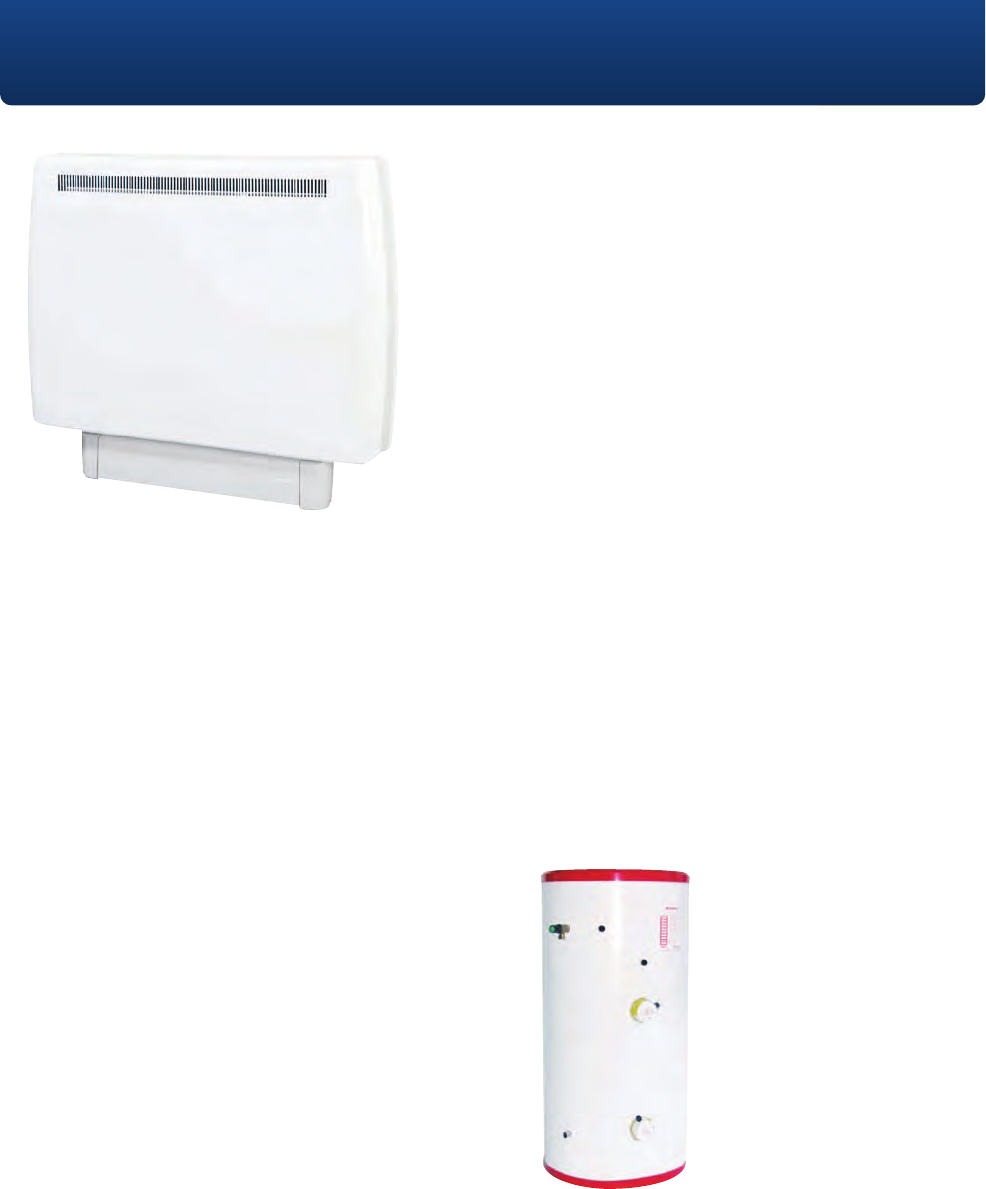
Meeting Part L
The quick start guide!
7
1 Improve the air-tightness:
It is now mandatory to test the air-tightness of a building on its completion.
There are minimum levels required under the new regulations but improving
on these has been shown to be one of the best ways to reduce the carbon
emission rate and therefore comply with Part L. Electric heating is helpful in
this regard as it results in less holes and gaps in the building fabric than gas
heating systems. The regulations require a minimum air-tightness of 10 cubic
metres per hour per square metre of floor area at 50 Pascals of pressure.
(10m
3
/h/m
2
@ 50Pa). Many developments can now achieve 7 or 5 and some
even 3m
3
/h/m
2
@ 50Pa.
2 Install mechanical ventilation with heat recovery:
Used in conjunction with improved air-tightness, so called MVHR recovers
otherwise wasted heat and is a great advantage to the ventilation strategy.
There are specific provisions within SAP (Appendix Q) which show how using
MVHR can reduce the carbon emissions rate and help compliance with Part L.
Xpelair offers leading MVHR systems as part of the Carbonlite range,
see www.xpelair.co.uk.
3 Improve the building fabric:
There are minimum U-values for all elements of the building fabric. U-values are
a measure of how much heat energy can escape through a given element of a
building. However, simply meeting these alone does not guarantee compliance.
By exceeding the minimum requirement significant improvements can be made
on the carbon emission rate. It is possible to show compliance with Part L just
by improving building fabric U-values. However, a combination of improved air-
tightness, MVHR and modest improvements in building fabric U-values has
proved most cost effective in many building developments. Consider reducing
U-values for roofs to 0.14, walls to 0.3, floors to 0.2 and glazing to 1.8 but,
generally speaking, the lower the better.
4 Consider glazing as a percentage of the building
floor area:
The regulations assume that glazing coverage is equivalent to 25% of the floor
area, which is more than most developments. Where this can be sensibly
reduced it will improve the carbon emission rate of the building. If the
specification of glazing is also improved the impact is increased. Consider gas
filled or triple glazing.
5 Go renewable:
The installation of solar thermal hot water systems, heat-pumps
or micro wind-turbines can have a number of major benefits. Often the
installation of some of these products can turn an otherwise non-compliant
building into a fully compliant one. However, many developers now also
see this as the preferred route to meeting other planning requirements or
aspirational targets for the use of micro-generation technologies. They can
significantly reduce running costs and can be a great selling point. Redring
offers one of the most efficient solar thermal hot water systems in the UK -
see www.redring.co.uk - and Xpelair has a world-class micro wind-turbine
(see www.xpelair.co.uk).
6 Improve the lighting plan:
In some buildings the carbon impact of the lighting can be significant and
expert advice can assist in demonstrating compliance with Part L.
Modular lighting strategies should be considered. The traditional rules of thumb
based on the number of rooms should give way to a recommended number of
lighting points by square metre of floor area. It is good practice to install low
energy fittings as standard indoors, with consideration given to highly effective
control. Externally the regulations require a maximum 150W with automatic
switch-off via PIR, photocell and timers.
7 Controllability reduces emissions:
It has been shown that easy to use, highly responsive heating systems actually
reduce carbon emissions. When heating responds quickly it tends, in practice,
to be used more effectively. Where controls are simple to use, people make
better use of them. Modern electric heating is highly controllable and
responsive. This is recognised within SAP. We offer leading edge electric
heating with our Eco-Response technology. Integrated and sensitive thermostats
within Creda electric heating products allow precise control room by room,
ensuring solar gain is taken into account in maintaining a desired temperature
and reducing carbon emissions.
8 Background heat:
By ensuring there is a low level background heat throughout the common
walkways, like stairwells and landings in apartment blocks, adjoining walls are
only considered semi-exposed for calculation purposes, reducing heat losses
and improving the carbon emission rate. We offer modern electric heating
solutions designed for this purpose.
9 Size the cylinder:
The regulations now assume a 170l water cylinder. By ensuring the cylinder is
not oversized for its application, heat losses are reduced. If the cylinder size is
reduced below 170l then the carbon emission rate is improved. Redring offers
cylinders at 90, 125, 150 and 170 litre capacities, as well as larger sizes
where necessary. See www.redring.co.uk for a full range of instant water
heating products that have no standing losses at all!
Creda Eco-Response
Redring LWSS Stainless Steel Cylinder
+44 (0) 1733 456789 www.creda-heating.co.uk


















